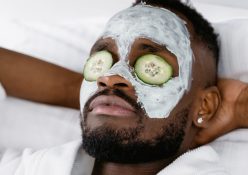Rid yourself of common misconceptions surrounding sunscreen – there’s more to it than you think
MYTH 1
‘The higher the SPF, the better’
If you believe this, we don’t blame you. It seems relatively ‘obvious’ in the sense that a higher SPF would mean a higher level of protection, or that it would protect you for a longer period of time compared to something with a lower SPF. And this is not entirely false. According to skincancer.org, a product’s SPF refers to how long it will take for the sun to redden your skin, depending on your skin type. Unfortunately, it’s a little more complicated than that, but it basically means that a sunscreen with an SPF of 30 allows you to be in the sun for 30 times longer than if you didn’t have any sunscreen on at all. But remember, no sunscreen can ever provide 100% protection. On top of that, any level of SPF, regardless of how high or low, needs to be reapplied every two hours. People tend to think that if they apply something with a high SPF, they can be in the sun for much longer, which is dangerous and misleading.
MYTH 2
‘Men have stronger skin and therefore don’t burn as easily as women do’
According to CANSA (Cancer Association of South Africa), the rates for men getting basal-cell carcinoma as well as the death rates from melanoma are far higher (in most countries) for men compared to women. This is not necessarily because men have a different skin structure that makes them more susceptible to skin cancers, but rather because they are less likely to protect themselves from the sun in the first place.
MYTH 3
‘I tan easily without burning, so I don’t need sunscreen’
There is no such thing as a safe tan. When the skin is hit with UV rays, melanocytes in the epidermis produce melanin, which is why the skin gets darker. This is the body’s way of protecting the skin from further damage. So even if you don’t burn, the skin is still damaged on a cellular level. A tan is simply a visible sign of this.
MYTH 4
‘I have dark skin, so I won’t burn’
One of the biggest mistakes that those with dark skin make is thinking that they won’t burn. Because the melanin levels in dark skin are much higher than in pale skin, you might not notice that you are sunburnt before it’s too late. Although darker skin has a higher tolerance to the sun, it doesn’t mean you can get away without using sun-screen. Skin cancer and premature ageing don’t discriminate.
MYTH 5
‘As long as I’m wearing a layer of sunscreen, I’m good to go’Well, it’s a good start.
But applying the correct amount of sunscreen is crucial to getting the adequate amount of protection. Regardless of your skin type or tone, you need to apply at least about a teaspoon’s worth of sunscreen to your face, neck and ears, and a shot glass’ worth to your body. To make it easier, apply it in layers, allowing a few minutes in between each one for absorption. Do this at least 15 minutes before going out into the sun, so that you can be sure to cover all your skin properly.
MYTH 6
‘I don’t need sunscreen when I’m inside’Unfortunately, you do.
Being exposed to computer and cellphone screens all day, we need extra protection from HEV (high-energy visible) light. Although exposure from this light can’t burn you, it does make you more susceptible to skin cancer, hyperpigmentation and premature ageing. Choose a sunscreen that offers broad-spectrum protection, and make sure to apply it to exposed areas daily. Subscribe to Man, for monthly grooming and skincare tips.
Subscribe to Man, for monthly grooming and skincare tips.
Shop cosmetics online at www.reddotcosmetics.co.za







